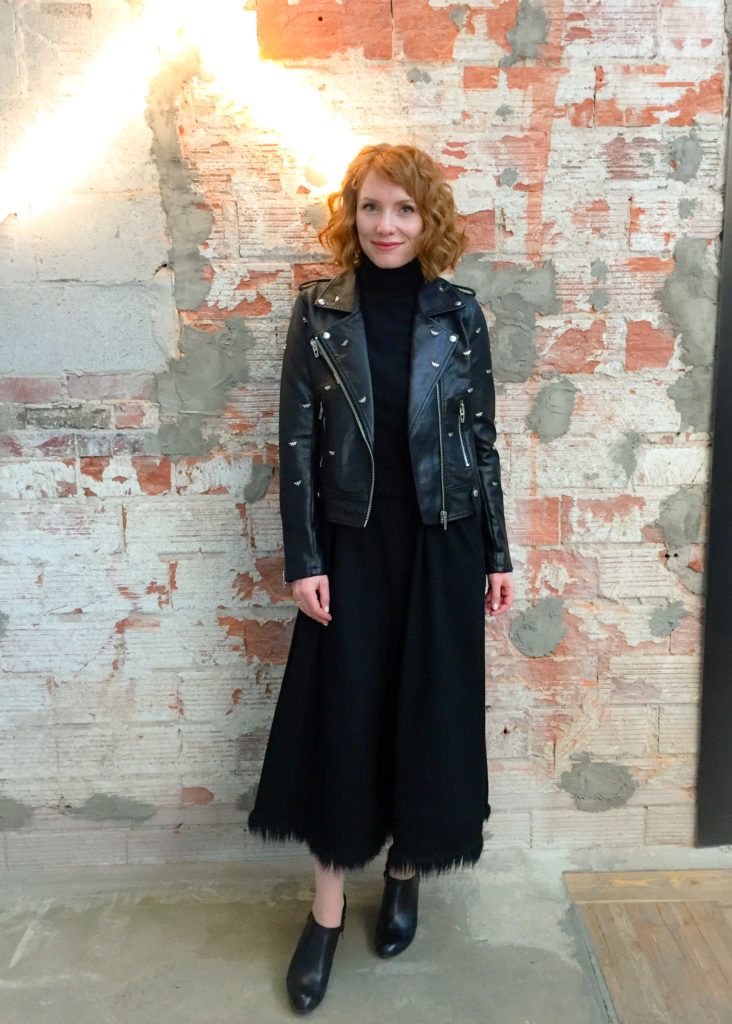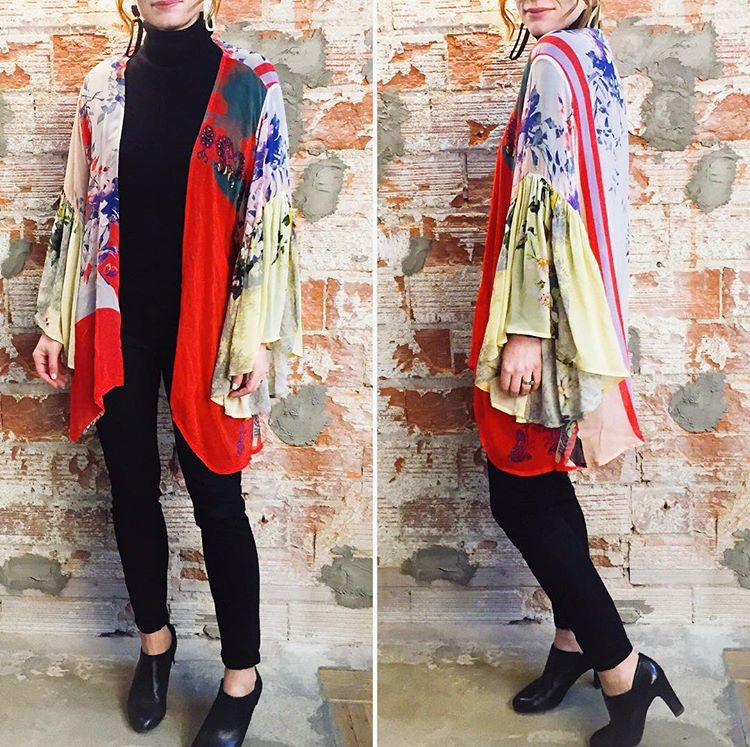As I mentioned in a previous post, a couple of weeks ago, my best friend and I took part in a local clothing resale pop-up market. We have dabbled a bit in thrift reselling in the past, though on this occasion, our merch was primarily our own closet cast-offs. As dedicated thrifters, we get a fair amount of regular closet turnover; we are constantly experimenting with different pieces, upgrading our wardrobes, and culling what doesn’t work. Direct resale is one way to recoup (some of) our costs, as well as extend the lifecyle of the clothing itself; other ways to do that include consignment, donation, and clothing swaps.
The experience of taking part in the pop-up market was an interesting and enlightening one for us – in addition to being a fun (if somewhat exhausting) opportunity to spend time together, and to connect with others. My best friend has a lot of retail experience, but this was my first time selling stuff outside of platforms like Kijiji, Instagram and the like. I’m not as much of a natural at it as I thought I would be, let’s just say. Having my own little secondhand store has been something of a pipe dream of mine for years, but I’m starting to rethink that a bit; the business side of it is definitely not my jam. Personal epiphanies aside, I had a few observations/thoughts gathered over the course of this resale adventure that I wanted to share here.
Your Clothes Aren’t Worth What You Think They’re Worth
I’ve said this before, but it bears saying again: clothes are not an investment. They lose most of their value as soon as you walk them out of the store. There are exceptions and caveats to this, but even a designer item that still has its tags on isn’t worth anywhere close to the full retail value. From experience, I would say that newbie resellers tend to make one of two mistakes: 1) pricing their merch based on how much they paid for it, or 2) pricing it based on how much they like the item. Neither of those things matter to the market. The only value an item has is what someone else is willing to pay for it. And you have to understand the psychology of the parties. All things being equal, a buyer doesn’t have an existing attachment to a piece of clothing, but will place a higher relative value on the money in their pocket. In contrast, a seller will feel a greater sense of investment in the clothing, because they already paid for it (whether for themselves in the first instance, or even purely for resale). There is also an opportunity cost that you cannot ignore; sometimes making a fast sale for a little bit less money is better than sitting on unsold merch for a long time in the hope of a higher profit. Bottom line: a lot of factors play a role in pricing, and pricing is one of the keys to success as a reseller.
Know Your Market
I think I learned a lot from watching other vendors in action. The ones that seemed to have the most customer traffic tended to have merch that was, for lack of a better word, pretty generic – brands popular with Millennials, solid colours (mostly neutrals), and fairly basic pieces. In contrast, the stuff my friend and I were selling reflected our slightly more “niche” aesthetic; we had somewhat fewer people buying from us, but in many cases the ones who did, bought multiple pieces. As casual or hobby resellers, that was enough to make it worth our time at this particular event; but if we were to try to get a proper side (or main) hustle going, we would likely have to re-think our inventory. It’s all fine and good to have a core of devoted customers who appreciate a specific aesthetic, but you have to make sure that it represents a market that can sustain your business. In my case, I don’t think a business model of “buy what I, myself, like” would work in the long term; my personal aesthetic doesn’t appeal to enough people.
Reselling Is A Tough Business
Margins are pretty slim if you are investing any money at all in your inventory – even at thrift prices. (The consignment model is much better from that perspective.) You have to deal in large volumes to make a decent profit, and that can be very time- and effort-intensive. Focusing on designer items can provide higher margins (but it’s not always a given because not all designer labels have equally good resale value) but it comes with its own drawbacks: such inventory is harder to source, and makes you reliant on a smaller pool of customers (with bigger budgets). I follow a few very successful resellers on social media, so I know it can be done, but it’s clear that what they do is no cake-walk.
To illustrate my point, here’s the low-down on our pop-up market experience.
Over the course of 2 days, my friend and I cleared about $1,000 in gross sales. This is a decent amount for what amounted to a kind of garage sale on our part. But everyone knows that gross revenue is not the same thing as profit, right? After deducting our expenses (booth rental, Square card reader, snacks, and miscellaneous supplies), we were left with $835. Of that, $100 went to a friend whose dress I sold for her. So we were left with $735, or about $367 each. [For various reasons, we decided to split the net sales 50-50 rather than based on how much inventory we brought to the table.]
Now, if we stop here, the money still looks pretty good. We spent roughly 14 hours over two days at the market, so we made about $26/hour. Of course, that doesn’t account for the time that went into preparing for the sale itself (steaming all the clothes, checking for flaws, making price tags, etc.). Let’s be conservative with that estimate, and say 3 hours each. We still made $21/hour, which is better than minimum wage.
But this is still an incomplete picture (if you were to look at this as a business rather than 2 people selling their own clothes) because it doesn’t account for the original cost of the clothes themselves. Those add up to $372 (most of the items were thrifted). This would leave $363 in true profit, or $181.50 each, or $10.70/hour. Less than minimum wage.
The other thing to consider is that less than half of the items we brought with us actually sold. I mention this because, unless your track record is 100% (i.e. absolutely everything you source, sells), then there will definitely be unsold inventory for which to account as well. Some inventory takes longer to sell; some doesn’t sell, and you have to count it as a loss. This is a relevant consideration for anyone operating as a business, rather than a hobby reseller/garage seller. And there is another thing: the time professional resellers put into sourcing their inventory, which is separate and apart from the financial cost of the inventory. If I were to apply this kind of analysis to our numbers in this example … well, let’s just say, my friend and I would not look like a profitable business.
This was a good reality check for me and my pipe dreams. I think I’ll be sticking with my day job. And I don’t mean to discourage any aspiring resellers in the audience, but I think being forearmed with knowledge is key to pursuing any new venture. In fact, if I missed some things in my analysis, please add a comment below – I would love to hear your reselling insights.




